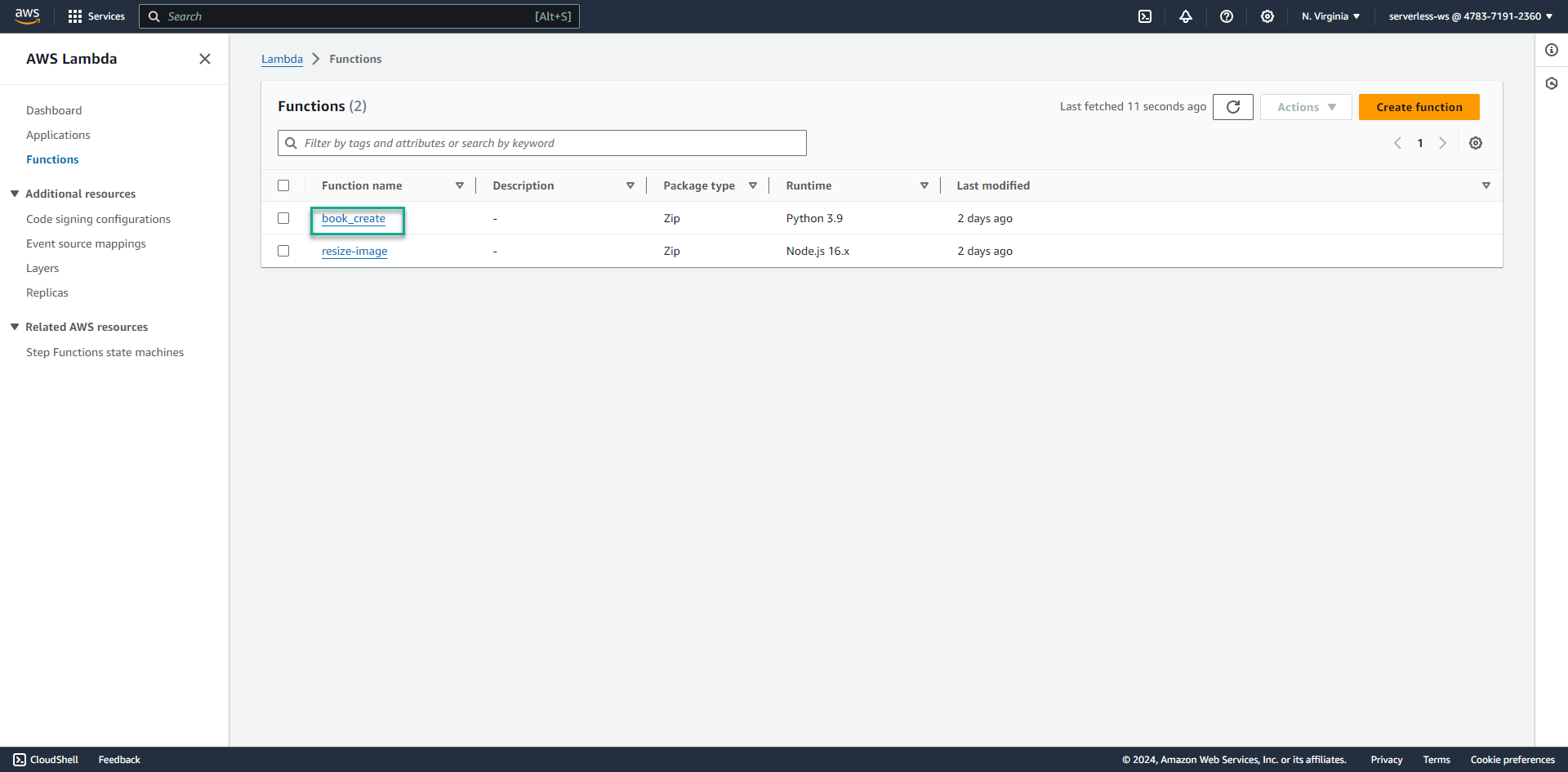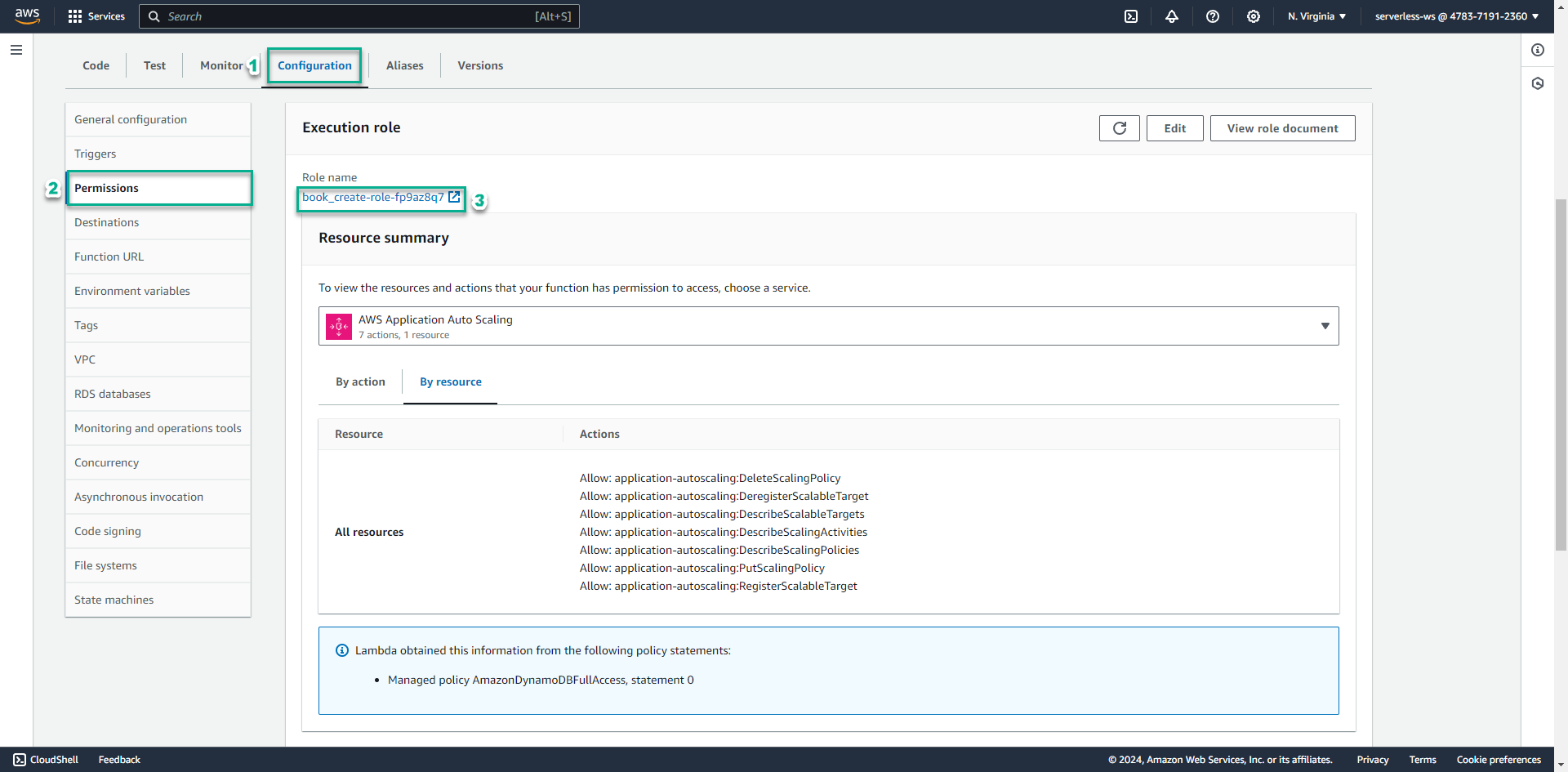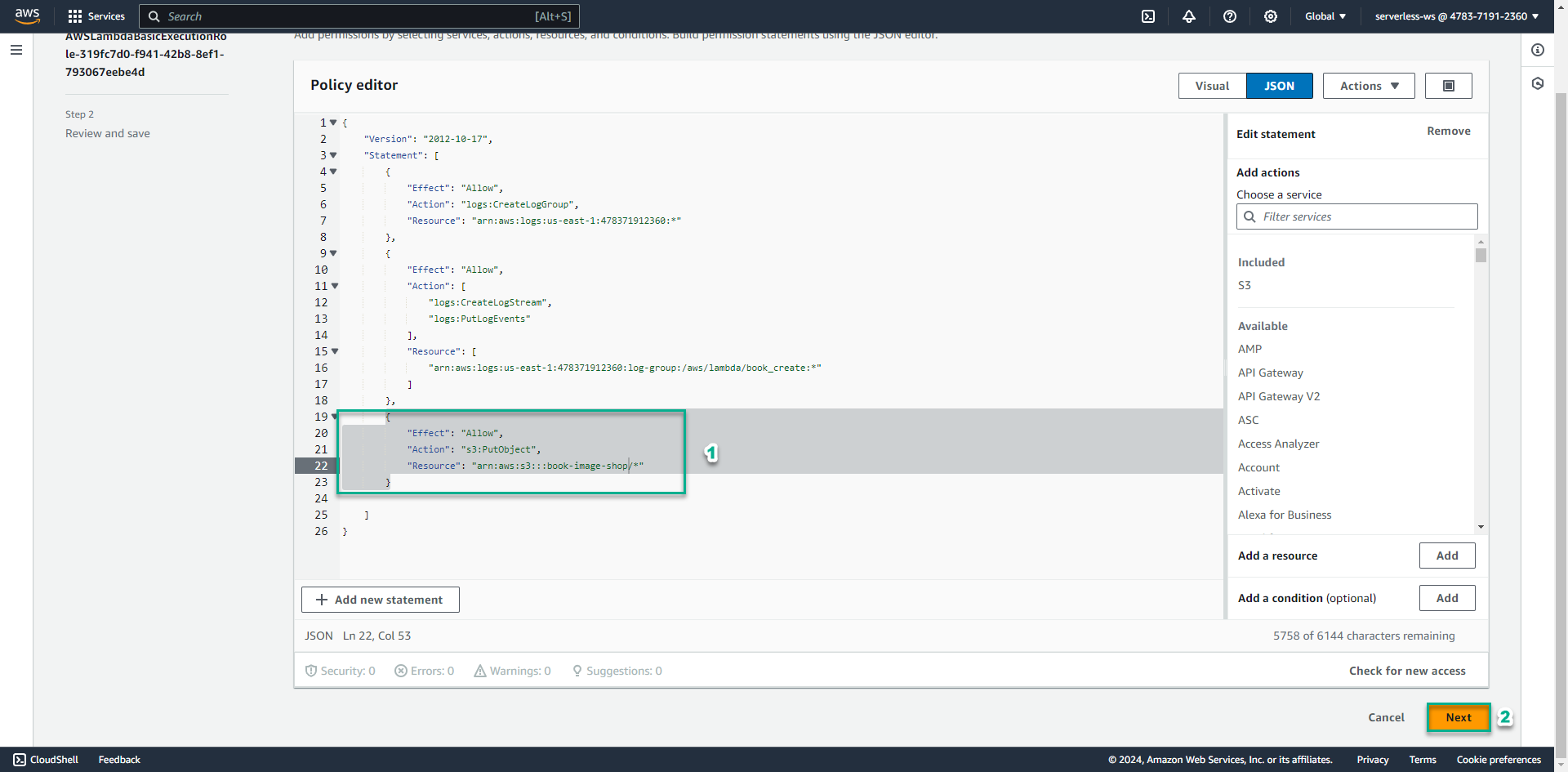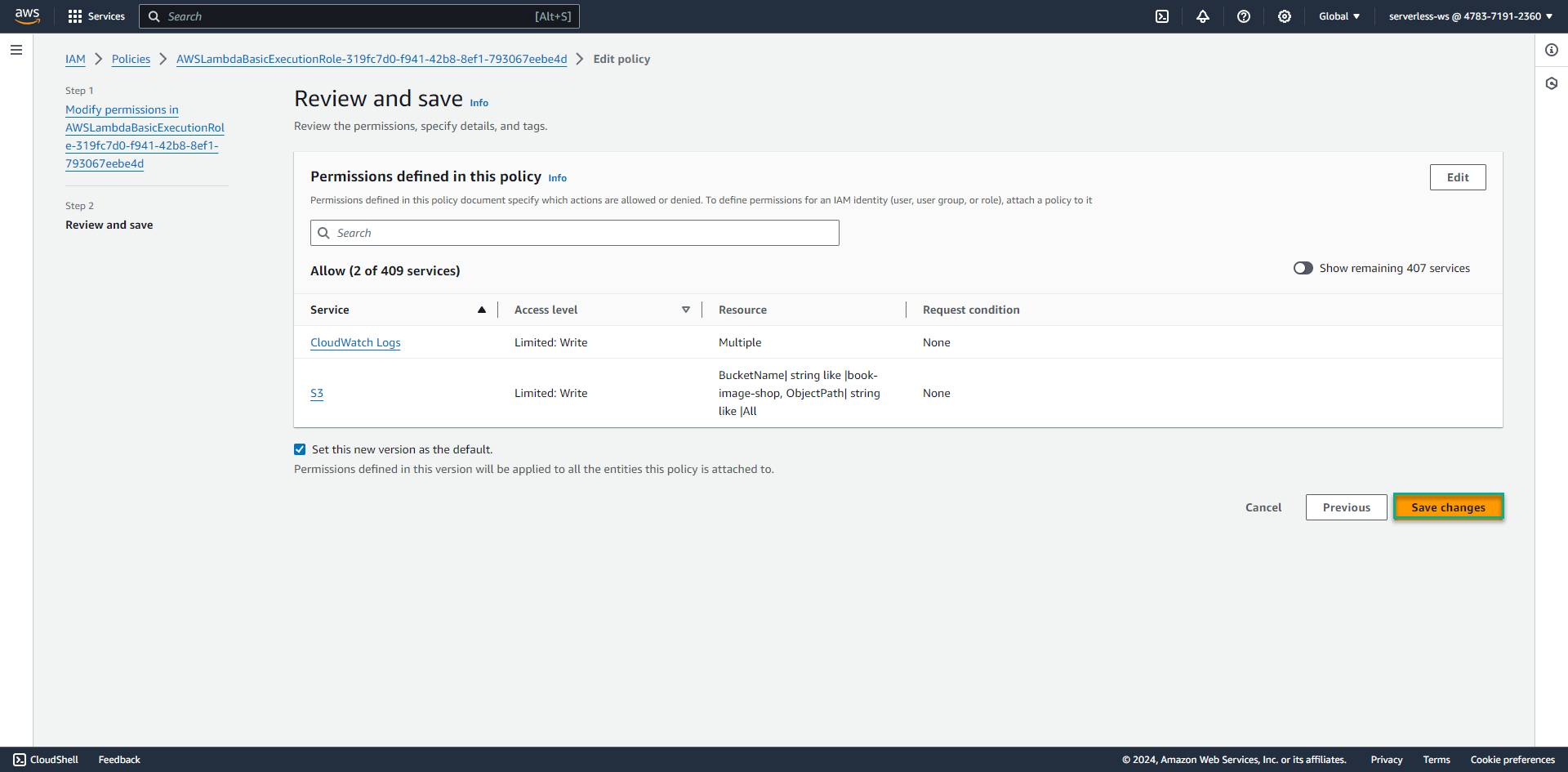Writing Lambda function
In this step, we will update the code for the book_create created function in post 1:
-
Open AWS Lambda console, then Click book_create function

-
Copy the below code block into lambda_function.py
import boto3 import json import base64 import io import cgi import os s3 = boto3.client('s3') client = boto3.resource('dynamodb') runtime_region = os.environ['AWS_REGION'] def get_data_from_request_body(content_type, body): fp = io.BytesIO(base64.b64decode(body)) # decode environ = {"REQUEST_METHOD": "POST"} headers = { "content-type": content_type, "content-length": len(body), } fs = cgi.FieldStorage(fp=fp, environ=environ, headers=headers) return [fs, None] def lambda_handler(event, context): content_type = event['headers'].get('Content-Type', '') or event['headers'].get('content-type', '') if content_type == 'application/json': book_item = json.loads(event["body"]) else: book_data, book_data_error = get_data_from_request_body( content_type=content_type, body=event["body"] ) name = book_data['image'].filename image = book_data['image'].value s3.put_object(Bucket='book-image-store', Key=name, Body=image) image_path = "https://{}.s3.{}.amazonaws.com/{}".format("book-image-resize-store", runtime_region, name) book_item = { "id": book_data['id'].value, "rv_id": 0, "name": book_data['name'].value, "author": book_data['author'].value, "price" : book_data['price'].value, "category": book_data['category'].value, "description": book_data['description'].value, "image": image_path } table = client.Table('Books') table.put_item(Item = book_item) response = { 'statusCode': 200, 'body': 'successfully created item!', 'headers': { 'Content-Type': 'application/json', "Access-Control-Allow-Headers": "Access-Control-Allow-Headers, Origin, Accept, X-Requested-With, Content-Type, Access-Control-Request-Method,X-Access-Token, XKey, Authorization", "Access-Control-Allow-Origin": "*", "Access-Control-Allow-Methods": "GET,PUT,POST,DELETE,OPTIONS" }, } return response- Then, click Deploy
The new code handles the images that the user wants to upload and is saved in the S3 bucket
If you create S3 buckets with names different from the lab, replace them in lines 35 and 36 of code
- Then, click Deploy
-
Give the Lambda function permission to write a file to the S3 bucket.
-
Click Configuration tab
-
Select Permissions pattern on the left menu
-
Click on the role the function is executing

-
Click on the existing policy that starts with AWSLambdaExecutionRole-
-
Click Edit policy
-
Click JSON tab and add the blow json block:
, { "Effect": "Allow", "Action": "s3:PutObject", "Resource": "arn:aws:s3:::book-image-store/*" }
-
Click Next
-
Review the settings and click Save changes

-